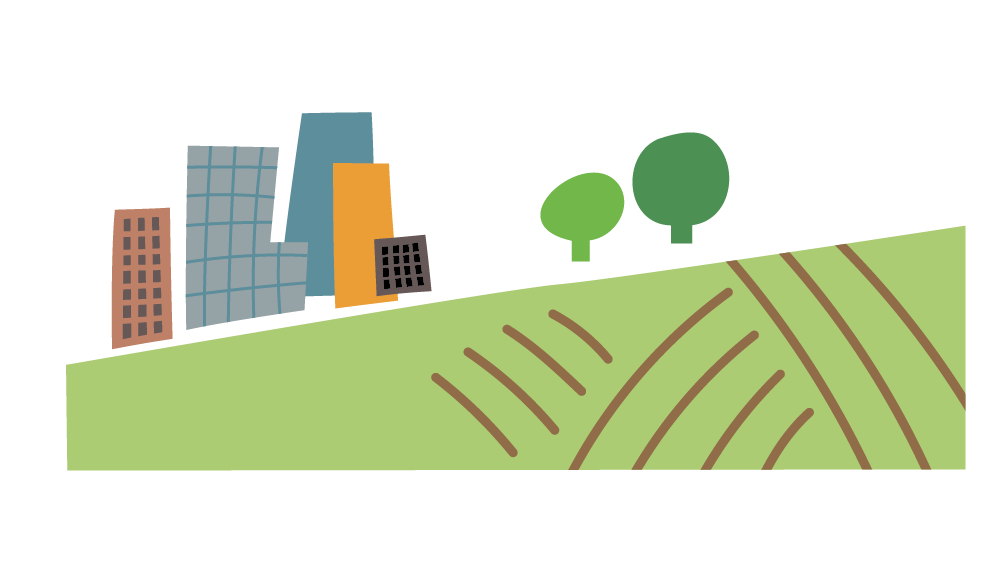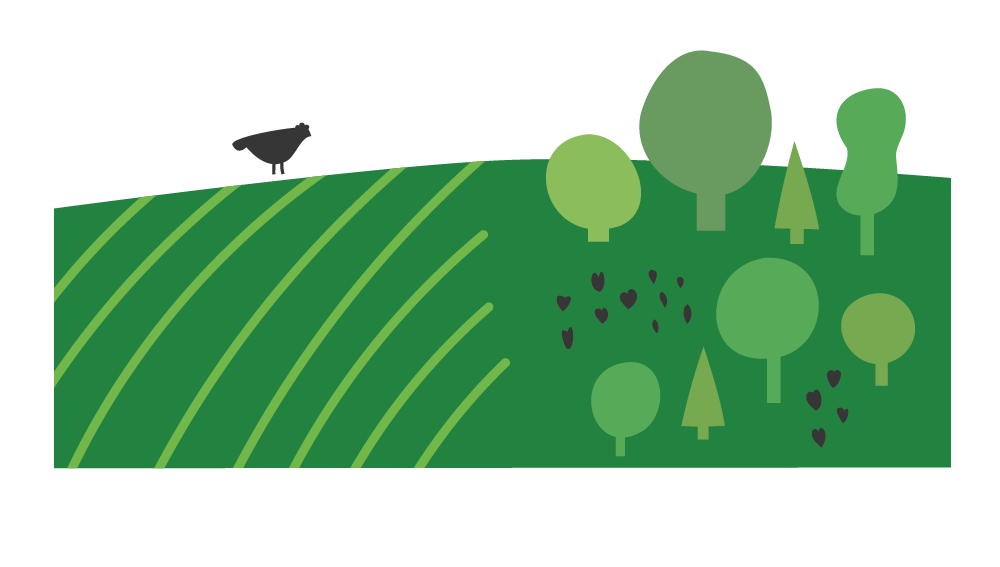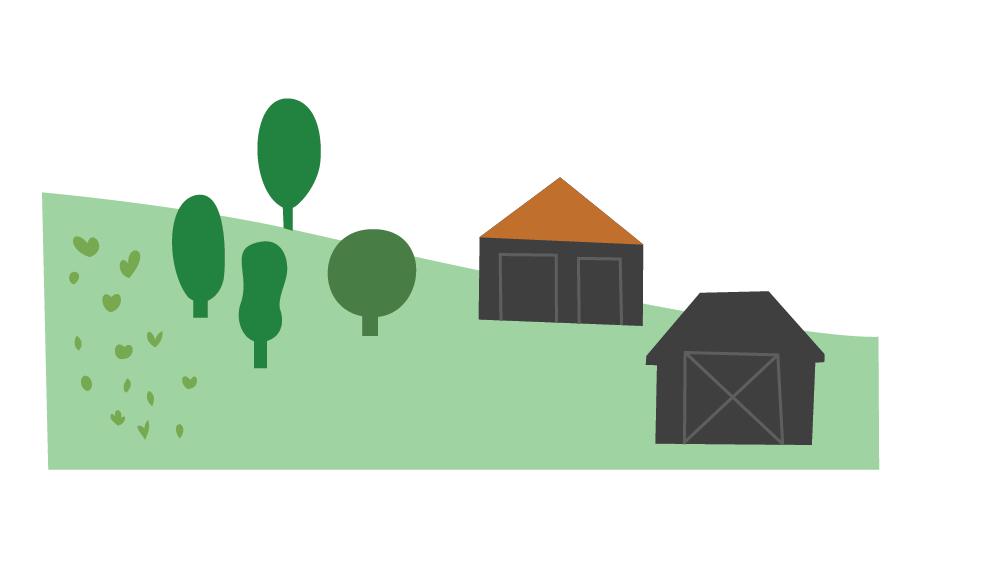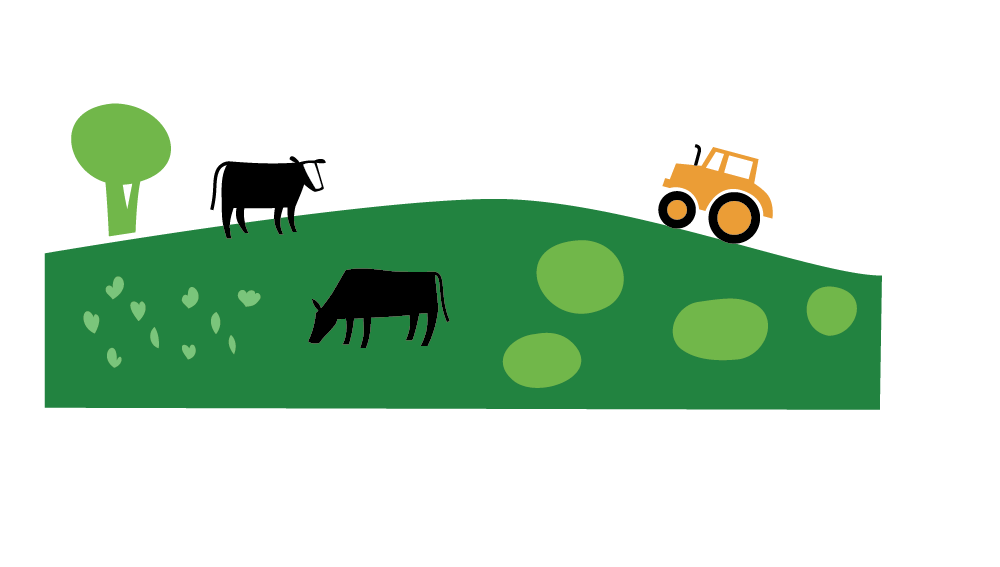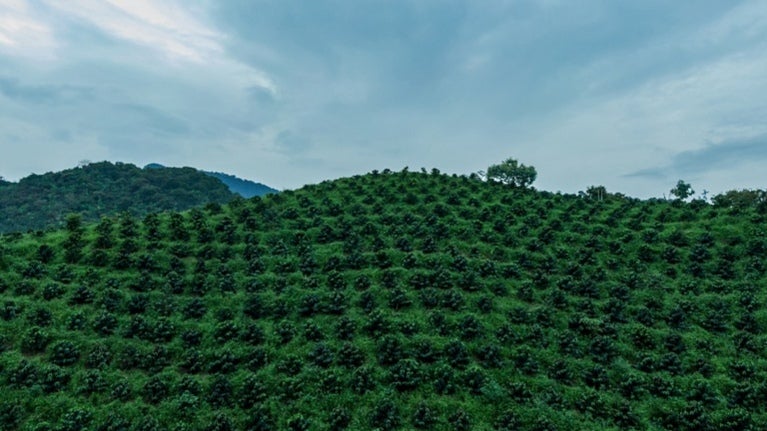
Feeling the Squeeze: Why Farms Need Support Now
Farms have helped feed the world for centuries, but that job is becoming increasingly challenging.
Population growth means there are more mouths to feed every year. Meanwhile, land and water are also limited resources, and some farming practices may have depleted soil and water quality, adding to the challenges of growing the food we put on our tables.
To continue growing enough food to feed the world in the face of increasing climate change, agriculture may need some different solutions. That's why scientists and farmers are continuously studying alternative agriculture practices and focusing on soil, water quality, and biodiversity on farms. In the long run, transitioning to these different methods may also make farming communities more resilient, supporting their livelihood for years to come.
Challenges for the 21st Century Farm
Population boom:
The global population is growing every year. Between 1961 and 2000, it more than doubled. By 2050, in order to provide enough nutrition for the expected 9.7 billion people in the world,1 the amount of food farms deliver will need to increase substantially. Meanwhile, the percentage of people who work in agriculture has dropped from 43% in 1991 to 26% by 2022.2
Biodiversity:
Converting land to agriculture may result in habitat destruction and biodiversity loss, reducing the rich variety of plant, animal, and microbial life on this planet.3 While pesticides help increase crop yields and safeguard food security, their exposure is linked to a wide range of effects on biodiversity, contributing to declines in populations of insects, birds, bats, earthworms, aquatic plants, fish and amphibians, among others.4
Farmers’ finances:
Almost half the world's population lives in households linked to agrifood systems.5 Extreme weather events are already generating more uncertainty in yields. Research shows that climate change will continue to impact agricultural output, incomes, prices, food access, food quality, and food safety,6 and degrading soil, water quality, and biodiversity could also decrease harvests. In the face of these pressures, food farms may need to build resilience to protect their livelihoods.
Land and water use:
Given our planet’s limited resources, farms cannot expand indefinitely, so they need techniques to help them grow more food more efficiently. In 2020, the global agricultural land area was 4.74 billion hectares, 3% less than in 2000. During that same period, the production of primary crops was 9.3 billion tonnes, an increase of 52%.7 Meanwhile, agriculture accounts for roughly 70% of freshwater withdrawals worldwide.8
Soil quality:
Frequent tilling and other practices have contributed to erosion, depleting soil faster than it can be replenished through natural fertilization by animals and decaying plant matter. Soil erosion could result in as much as a 50% loss in crop yields,10 and 16% of conventionally managed soils will last less than 100 years if they keep eroding at their current rates.9
Carbon emissions:
Total agriculture-related emissions in 2020 amounted to 10.5 billion tonnes of CO2 equivalent of GHG released into the atmosphere. Activities within the farm-gate (those related to the production of crops and livestock) accounted for 70% of those emissions–growing 13% between 2000 and 2020–followed by deforestation (28%) and fires in humid tropical forests and organic soils (2%).10
DID YOU KNOW?
Deforestation, intensive farming practices, and degradation of soil health due to agricultural practices are within the top 10 most relevant sustainability concerns for EU coffee consumers.11
Sources
1 United Nations. "Global Issues: Population"
2 World Bank Data. "Employment in Agriculture”. 2024
3 Chatham House. “Food system impacts on biodiversity loss: Three levers for food system transformation in support of nature”. 2021
4 European Environment Agency. "How Pesticides Impact Human Health and Ecosystems in Europe”. 2023
5 Tchonkouang R.; Onyeaka H.; Nkoutchou H.; "Assessing the vulnerability of food supply chains to climate change-induced disruptions". Science of The Total Environment. 2024
6 FAO. "Almost Half the World’s Population Lives in Households Linked to Agrifood Systems". 2023
7 FAO. 2022. World Food and Agriculture – Statistical Yearbook 2022. Rome.
8 UNESCO. "UN World Water Development Report: Water for Prosperity and Peace Statistics". 2024
9 Evans D.; Quinton J.; Davies J.; “Soil lifespans and how they can be extended by land use and management change". Environmental Research Letters. 2020
10 FAO. 2022. World Food and Agriculture – Statistical Yearbook 2022. Rome.
11 Kantar. Sustainable Initiatives at Shelf. 2023
